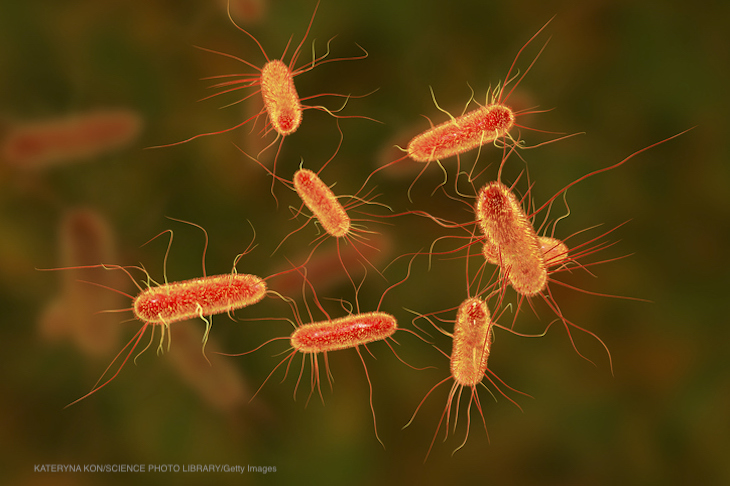The CDC has confirmed that the Huntley High E. coli illnesses last month are linked to a multistate outbreak. Katia Martinez, Health Communication Specialist for the Division of Foodborne, Waterborne, and Environmental Diseases (DFWED) and National Center for Emerging and Zoonotic Infectious Disease (NCEZID) of the Centers for Disease Control and Prevention told Food Poisoning Bulletin that as of October 25, 2023, there are 22 people in 10 states that are sick with E. coli infections and that the Huntley outbreak is linked to those illnesses.

Three people in this outbreak have developed hemolytic uremic syndrome (HUS), which is a type of kidney failure. Officials have not identified the source of the outbreak, and the CDC is working with state health partners to interview patients. The CDC has not posted any information about this outbreak.
Because patients have developed HUS, the E. coli bacteria is a Shiga toxin-producing variety, or STEC. STEC bacteria produce Shiga toxins as they grow. When these toxins enter the bloodstream, they destroy red blood cells. Those dead cells travel to the kidneys, where they clog small tubes called glomeruli, and that causes kidney damage. People with HUS can suffer from kidney failure, strokes, and may require dialysis or even a kidney transplant.

Food Safety Lawyer and Food Poisoning Bulletin Publisher Eric Hageman
Noted food safety attorney Eric Hageman, who has successfully represented many clients in E. coli and HUS lawsuits, said, “We hope that the CDC and state partners can solve this outbreak so no one else gets sick. E. coli and HUS are serious conditions that cause pain and trauma to patients and families. The sooner a food is identified, the more likely it is the outbreak will not grow.”
In the past, E. coli outbreaks have been linked to restaurants, state and county fairs, romaine lettuce and other leafy greens, fast food, contact with ruminant animals, falafel, ground beef, raw milk, flour, cake mix, and irrigation water. Because this is a multistate outbreak, the odds are good that some type of contaminated food that is widely distributed is the source of the pathogen.
Symptoms of an E. coli infection usually start a few days, up to nine days, from the infection point. Patients can have a mild fever, nausea, and vomiting, and most have severe and painful abdominal cramps along with the characteristic bloody diarrhea.
Symptoms of HUS include little or no urine output, easy bruising, a skin rash, lethargy, pale skin, and bleeding from the nose and mouth. This condition is a medical emergency and anyone who is experiencing these symptoms should see a doctor as soon as possible.
If you or a family member have been sick with these symptoms, see your doctor. You may be a part of these E. coli illnesses.

If you have been sickened with a food poisoning infection, please contact our experienced attorneys for help with a possible lawsuit at 1-888-377-8900 or text us at 612-261-0856. Our firm represents clients in lawsuits against grocery stores, restaurants, and food processors.




